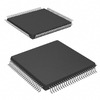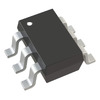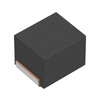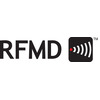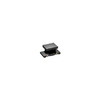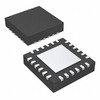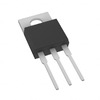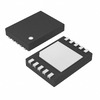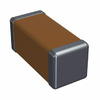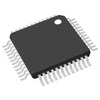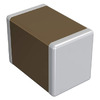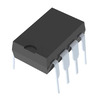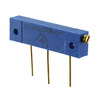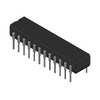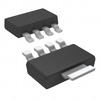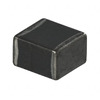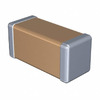Exploring the ATMEGA2560 Microcontroller
The ATMEGA2560 microcontroller, a prominent representative of the AVR RISC architecture, is celebrated for its efficiency, in executing powerful instructions within a single clock cycle. This article dives into the ATMEGA2560's basic specifications, including its expansive memory, flexible pinout configuration, and versatile communication protocols like UART, SPI, and I2C. In addition, we’ll explore its notable features and varied applications, from robotics to IoT, along with practical design insights for maximizing its functionality. Whether you're designing complex control systems or energy-efficient solutions, this article will provide the knowledge to leverage the ATMEGA2560's full potential in your projects.Catalog

ATMEGA2560 Overview
The ATMEGA2560 plays an intial role as the microcontroller in Arduino Mega 2560 boards, celebrated for its prowess in managing both robust and complex applications. Functioning with an AVR RISC-based architecture, it optimally merges processing velocity with energy conservation, executing intricate commands in a single clock cycle. This attribute is not just an abstract concept; on the contrary, developers widely resource it to forge seamlessly interactive systems that operate in real time.
Beyond its structural design, the ATMEGA2560 showcases a blend of swift execution with mindful energy use. Its agility in managing complex tasks makes it a sought-after choice for energy-conscious projects. Indeed, many industry experts have adeptly harnessed this synergy to devise power management schemes in battery-dependent gadgets, thus substantially lengthening their functional periods without diminishing performance.
The broad adaptability of the ATMEGA2560 finds echoes in various sectors, such as robotics and ecological surveillance. Its extensive array of integrated peripherals enhances development speed and reduces reliance on extra hardware, easing the design journey. Drawing from personal experience, developers frequently acknowledge its flexibility in crafting modular systems requiring scalability and swift prototyping; these reflections are colored by their own fervent passion and insightful evaluations.
ATMEGA2560 Pin Configuration

|
Pin Number |
Pin Name |
Mapped Pin Name |
|
1 |
PG5 ( OC0B ) |
Digital pin 4 (PWM) |
|
2 |
PE0 ( RXD0/PCINT8 ) |
Digital pin 0 (RX) |
|
3 |
PE1 ( TXD0 ) |
Digital pin 1 (TX) |
|
4 |
PE2 ( XCK0/AIN0 ) |
|
|
5 |
PE3 ( OC3A/AIN1 ) |
Digital pin 5 (PWM) |
|
6 |
PE4 ( OC3B/INT4 ) |
Digital pin 2 (PWM) |
|
7 |
PE5 ( OC3C/INT5 ) |
Digital pin 3 (PWM) |
|
8 |
PE6 ( T3/INT6 ) |
|
|
9 |
PE7 ( CLK0/ICP3/INT7 ) |
|
|
10 |
VCC |
VCC |
|
11 |
GND |
GND |
|
12 |
PH0 ( RXD2 ) |
Digital pin 17 (RX2) |
|
13 |
PH1 ( TXD2 ) |
Digital pin 16 (TX2) |
|
14 |
PH2 ( XCK2 ) |
|
|
15 |
PH3 ( OC4A ) |
Digital pin 6 (PWM) |
|
16 |
PH4 ( OC4B ) |
Digital pin 7 (PWM) |
|
17 |
PH5 ( OC4C ) |
Digital pin 8 (PWM) |
|
18 |
PH6 ( OC2B ) |
Digital pin 9 (PWM) |
|
19 |
PB0 ( SS/PCINT0 ) |
Digital pin 53 (SS) |
|
20 |
PB1 ( SCK/PCINT1 ) |
Digital pin 52 (SCK) |
|
21 |
PB2 ( MOSI/PCINT2 ) |
Digital pin 51 (MOSI) |
|
22 |
PB3 ( MISO/PCINT3 ) |
Digital pin 50 (MISO) |
|
23 |
PB4 ( OC2A/PCINT4 ) |
Digital pin 10 (PWM) |
|
24 |
PB5 ( OC1A/PCINT5 ) |
Digital pin 11 (PWM) |
|
25 |
PB6 ( OC1B/PCINT6 ) |
Digital pin 12 (PWM) |
|
26 |
PB7 ( OC0A/OC1C/PCINT7 ) |
Digital pin 13 (PWM) |
|
27 |
PH7 ( T4 ) |
|
|
28 |
PG3 ( TOSC2 ) |
|
|
29 |
PG4 ( TOSC1 ) |
|
|
30 |
RESET |
RESET |
|
31 |
VCC |
VCC |
|
32 |
GND |
GND |
|
33 |
XTAL2 |
XTAL2 |
|
34 |
XTAL1 |
XTAL1 |
|
35 |
PL0 ( ICP4 ) |
Digital pin 49 |
|
36 |
PL1 ( ICP5 ) |
Digital pin 48 |
|
37 |
PL2 ( T5 ) |
Digital pin 47 |
|
38 |
PL3 ( OC5A ) |
Digital pin 46 (PWM) |
|
39 |
PL4 ( OC5B ) |
Digital pin 45 (PWM) |
|
40 |
PL5 ( OC5C ) |
Digital pin 44 (PWM) |
|
41 |
PL6 |
Digital pin 43 |
|
42 |
PL7 |
Digital pin 42 |
|
43 |
PD0 ( SCL/INT0 ) |
Digital pin 21 (SCL) |
|
44 |
PD1 ( SDA/INT1 ) |
Digital pin 20 (SDA) |
|
45 |
PD2 ( RXD1/INT2 ) |
Digital pin 19 (RX1) |
|
46 |
PD3 ( TXD1/INT3 ) |
Digital pin 18 (TX1) |
|
47 |
PD4 ( ICP1 ) |
|
|
48 |
PD5 ( XCK1 ) |
|
|
49 |
PD6 ( T1 ) |
|
|
50 |
PD7 ( T0 ) |
Digital pin 38 |
|
51 |
PG0 ( WR ) |
Digital pin 41 |
|
52 |
PG1 ( RD ) |
Digital pin 40 |
|
53 |
PC0 ( A8 ) |
Digital pin 37 |
|
54 |
PC1 ( A9 ) |
Digital pin 36 |
|
55 |
PC2 ( A10 ) |
Digital pin 35 |
|
56 |
PC3 ( A11 ) |
Digital pin 34 |
|
57 |
PC4 ( A12 ) |
Digital pin 33 |
|
58 |
PC5 ( A13 ) |
Digital pin 32 |
|
59 |
PC6 ( A14 ) |
Digital pin 31 |
|
60 |
PC7 ( A15 ) |
Digital pin 30 |
|
61 |
VCC |
|
|
62 |
GND |
|
|
63 |
PJ0 ( RXD3/PCINT9 ) |
Digital pin 15 (RX3) |
|
64 |
PJ1 ( TXD3/PCINT10 ) |
Digital pin 14 (TX3) |
|
65 |
PJ2 ( XCK3/PCINT11 ) |
|
|
66 |
PJ3 ( PCINT12 ) |
|
|
67 |
PJ4 ( PCINT13 ) |
|
|
68 |
PJ5 ( PCINT14 ) |
|
|
69 |
PJ6 ( PCINT15 ) |
|
|
70 |
PG2 ( ALE ) |
Digital pin 39 |
|
71 |
PA7 ( AD7 ) |
Digital pin 29 |
|
72 |
PA6 ( AD6 ) |
Digital pin 28 |
|
73 |
PA5 ( AD5 ) |
Digital pin 27 |
|
74 |
PA4 ( AD4 ) |
Digital pin 26 |
|
75 |
PA3 ( AD3 ) |
Digital pin 25 |
|
76 |
PA2 ( AD2 ) |
Digital pin 24 |
|
77 |
PA1 ( AD1 ) |
Digital pin 23 |
|
78 |
PA0 (AD0) |
Digital pin 22 |
|
79 |
PJ7 |
|
|
80 |
VCC |
VCC |
|
81 |
GND |
GND |
|
82 |
PK7 ( ADC15/PCINT23 ) |
Analog pin 15 |
|
83 |
PK6 ( ADC14/PCINT22 ) |
Analog pin 14 |
|
84 |
PK5 ( ADC13/PCINT21 ) |
Analog pin 13 |
|
85 |
PK4 ( ADC12/PCINT20 ) |
Analog pin 12 |
|
86 |
PK3 ( ADC11/PCINT19) |
Analog pin 11 |
|
87 |
PK2 ( ADC10/PCINT18) |
Analog pin 10 |
|
88 |
PK1 ( ADC9/PCINT17 ) |
Analog pin 9 |
|
89 |
PK0 ( ADC8/PCINT16 ) |
Analog pin 8 |
|
90 |
PF7 ( ADC7/TDI ) |
Analog pin 7 |
|
91 |
PF6 ( ADC6/TMO ) |
Analog pin 6 |
|
92 |
PF5 ( ADC5/TMS ) |
Analog pin 5 |
|
93 |
PF4 ( ADC4/TCK ) |
Analog pin 4 |
|
94 |
PF3 ( ADC3 ) |
Analog pin 3 |
|
95 |
PF2 ( ADC2 ) |
Analog pin 2 |
|
96 |
PF1 ( ADC1 ) |
Analog pin 1 |
|
97 |
PF0 ( ADC0 ) |
Analog pin 0 |
|
98 |
AREF |
Analog Reference |
|
99 |
GND |
GND |
|
100 |
AVCC |
VCC |
CAD Model
Symbol

Footprint

3D Representation
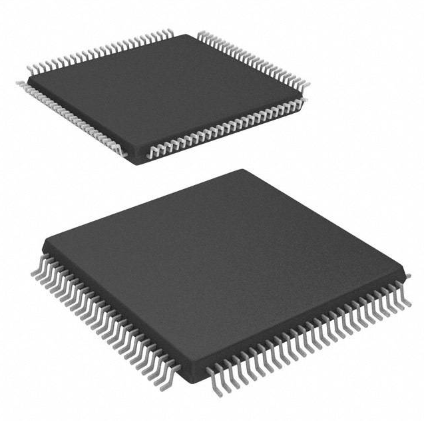
Technical Specifications
Here's the table for the technical specifications, attributes, parameters, and similar parts to Microchip Technology ATMEGA2560-16AU.
|
Type |
Parameter |
|
Factory Lead Time |
7 Weeks |
|
Mount |
Surface Mount |
|
Mounting Type |
Surface Mount |
|
Package / Case |
100-TQFP |
|
Number of Pins |
100 |
|
Data Converters |
A/D 16x10b |
|
Number of I/Os |
86 |
|
Watchdog Timers |
Yes |
|
Operating Temperature |
-40°C~85°C TA |
|
Packaging |
Tray |
|
Series |
AVR® ATmega |
|
Published |
2009 |
|
JESD-609 Code |
e3 |
|
Pbfree Code |
Yes |
|
Part Status |
Active |
|
Moisture Sensitivity Level (MSL) |
3 (168 Hours) |
|
Number of Terminations |
100 |
|
Termination |
SMD/SMT |
|
Terminal Finish |
Matte Tin (Sn) - annealed |
|
Additional Feature |
Also operates at 2.7V minimum supply at 8 MHz |
|
Terminal Position |
QUAD |
|
Terminal Form |
GULL WING |
|
Peak Reflow Temperature (°C) |
260 |
|
Supply Voltage |
5V |
|
Terminal Pitch |
0.5mm |
|
Frequency |
16MHz |
|
Time@Peak Reflow Temperature (s) |
40 |
|
Base Part Number |
ATMEGA2560 |
|
Operating Supply Voltage |
5V |
|
Power Supplies |
5V |
|
Interface |
2-Wire, EBI/EMI, I2C, SPI, UART, USART |
|
Memory Size |
256kB |
|
Oscillator Type |
Internal |
|
RAM Size |
8K x 8 |
|
Voltage - Supply (Vcc/Vdd) |
4.5V~5.5V |
|
uPs/uCs/Peripheral ICs Type |
Microcontroller, RISC |
|
Core Processor |
AVR |
|
Peripherals |
Brown-out Detect/Reset, POR, PWM, WDT |
|
Program Memory Type |
FLASH |
|
Core Size |
8-Bit |
|
Program Memory Size |
256KB 128K x 16 |
|
Connectivity |
EBI/EMI, I2C, SPI, UART/USART |
|
Bit Size |
8 |
|
Access Time |
16 μs |
|
Has ADC |
Yes |
|
DMA Channels |
No |
|
Data Bus Width |
8b |
|
Number of Timers/Counters |
6 |
|
Density |
2 Mb |
|
EEPROM Size |
4K x 8 |
|
Number of ADC Channels |
16 |
|
Number of PWM Channels |
12 |
|
Number of I2C Channels |
1 |
|
Height |
1.05mm |
|
Length |
14.1mm |
|
Width |
14.1mm |
|
REACH SVHC |
No SVHC |
|
Radiation Hardening |
No |
|
RoHS Status |
ROHS3 Compliant |
|
Lead Free |
Lead Free |
Features
|
Feature Category |
Feature |
|
High Endurance Non-volatile Memory Segments |
Write/Erase Cycles: 10,000 Flash |
|
Atmel QTouch Library Support |
Yes |
|
JTAG Interface |
IEEE std. 1149.1 compliant |
|
Peripheral Features |
Real-time Counter with Separate Oscillator |
|
Programmable Watchdog Timer with Separate On-chip
Oscillator |
|
|
On-chip Analog Comparator |
|
|
Interrupt and Wake-up on Pin Change |
|
|
Other Special Features |
Power-on Reset and Programmable Brown-out Detection |
|
Internal Calibrated Oscillator |
|
|
External and Internal Interrupt Sources |
|
|
Sleep Modes |
Six Modes: Idle, ADC Noise Reduction, Power-save,
Power-down, Standby, Extended Standby |
Applications
The ATMEGA2560 microcontroller, celebrated for its exceptional performance capabilities, serves as a basis for many contemporary technology applications. Its broad adoption is fueled by its adaptability and dependability across numerous projects, effectively solving complex system needs with remarkable precision.
3D Printing Innovations
Within the 3D printing industry, the ATMEGA2560 plays a key role in managing the motion of printers and ensuring the meticulous placement of each layer. Its sophisticated processing power manages intricate algorithms, guaranteeing high-quality results. By precisely coordinating motor actions and filament dispensing, it significantly enhances print resolution and accuracy. You can often exploit the microcontroller's extensive I/O pins to connect an array of sensors and motor drivers, enabling detailed movements. Experiences demonstrate that tailored firmware optimizations for specific 3D printers can notably elevate print quality and cut down on production time, highlighting the microcontroller's flexible nature.
Motor Control
The ATMEGA2560 finds widespread application in motor control systems, facilitating the execution of complex control algorithms for reliable motor performance. It provides efficient speed regulation and direction control, which is especially beneficial in robotic and industrial systems requiring exact operational precision. In practice, integrating feedback sensors with the ATMEGA2560 enhances performance by continuously updating operational parameters. You can often underline the value of iterative testing and calibration to attain superior motor control, leading to increased productivity and system dependability.
Sensor Interfacing
For sensor interfacing, the microcontroller forms a basis for integrating diverse analog and digital sensors, processing their data to provide actionable insights. This capability is active in systems where gathering and monitoring environmental data is ultimate, such as in weather stations and smart cities. You can highlight the advantages of refining data acquisition techniques and signal processing algorithms to boost the trustworthiness of sensor readings. These refined approaches contribute to the development of more competent and responsive monitoring systems.
Comprehensive Temperature Detection
In temperature detection systems, the ATMEGA2560 excels by managing numerous sensor inputs simultaneously, supporting extensive actual thermal monitoring. Its robust processing ability guarantees accurate temperature readings, used for applications in climate control and safety systems. Implementing redundant sensing pathways is often advised to enhance system reliability, a practice mostly beneficial in environments where temperature stability is used. This illustrates an equilibrium between innovative engineering and practical dependability.
Smart Home and IoT Implementations
In the domain of home automation and IoT systems, the ATMEGA2560 empowers advanced functionalities, from regulating lights and appliances to enabling sophisticated home security solutions. Its connectivity features ensure smooth integration with assorted communication protocols, fostering a cohesive ecosystem. You can advocate for exploring hybrid systems that use both wired and wireless technologies to achieve an optimal balance of performance and reliability. This integration often results in superior experiences and more intelligent living spaces.
Alternatives
• ATMEGA88
Schematic
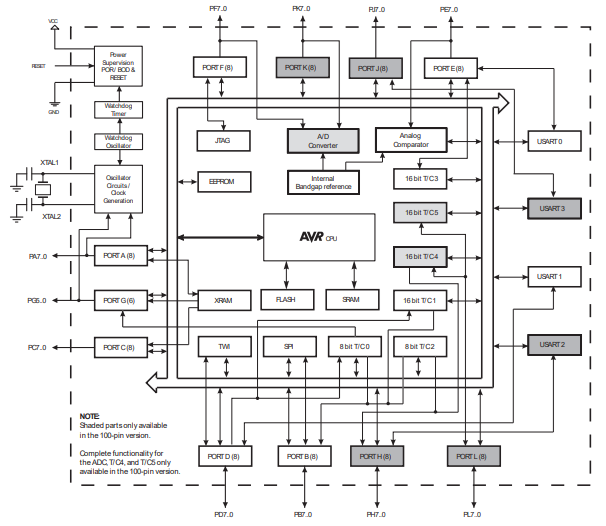
Package

Manufacturer
Microchip Technology Inc., situated in the vibrant locale of Chandler, Arizona, stands as a globally acclaimed creator of cutting-edge microcontroller solutions. The company's unwavering pursuit of innovation and reliability has carved it into a notable place in the competitive electronics industry.
Microcontrollers, exemplified by Microchip's ATMEGA2560, are basic in the operation of countless electronic gadgets today. Employed in a wide array of devices, their uses span from basic consumer electronics to intricate industrial systems. This adaptability is a testament to their impact as they play major roles in shaping a device's efficiency, performance, and energy consumption patterns.
Datasheet PDF
ATMEGA2560-16AU Datasheets:
About us
ALLELCO LIMITED
Read more
Quick inquiry
Please send an inquiry, we will respond immediately.
Frequently Asked Questions [FAQ]
1. Does Arduino use the ATMEGA2560?
The Arduino Mega 2560, powered by the ATMEGA2560 microcontroller, stands out for its ability to manage intricate operations, largely facilitated by its plentiful I/O pins and substantial sketch memory. These attributes offer substantial benefits for endeavors such as 3D printing and sophisticated robotics. You can find its adaptability useful in extending project capabilities. Many highlight how the extensive pins and processing capacity allow for simultaneous data coordination and peripheral integration, which enhances the complexity and reach of complex projects.
2. Is there a DIP version of an ATMEGA2560?
A DIP package version for the ATMEGA2560 does not exist, with the ATMEGA1284 being the closest substitute in terms of memory capacity. However, it falls short in I/O pins and serial ports, pushing consideration towards compromises between size and operational breadth. In navigating this terrain, you can choose surface-mount technology to accommodate extensive I/O demands, despite its augmented assembly and repair challenges.
3. How do I burn a bootloader to an Arduino ATMEGA2560?
Setting up a bootloader on an ATMEGA2560 requires specific tools like the USBtinyISP and a clear procedure accessible via the Arduino IDE. Mastering this technique is useful for unleashing the microcontroller's full capabilities, allowing for personalized firmware installations and peak performance. You can frequently observe that a dependable bootloader installation method significantly bolsters development consistency and project triumph.
4. What is the best ATMEGA2560 programmer?
The Atmel-ICE stands out as a preferred tool for programming and debugging ATMEGA2560 microcontrollers, praised for its extensive compatibility with ARM® Cortex®-M and AVR devices. Its strength lies in its ability to efficiently tackle diverse debugging tasks, thereby facilitating the development workflow. You know that owning a high-caliber programmer like the Atmel-ICE can enhance debugging efficacy, positively affecting project schedules.
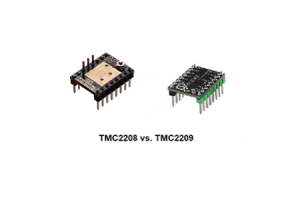
TMC2208 vs. TMC2209: Which Stepper Driver is Right for You?
on November 13th

HC-06 Bluetooth Module: Applications, Arduino Connection, and Specifications
on November 12th
Popular Posts
-

What is GND in the circuit?
on January 1th 3162
-

RJ-45 Connector Guide: RJ-45 Connector Color Codes, Wiring Schemes, R-J45 Applications, RJ-45 Datasheets
on January 1th 2738
-

Understanding Power Supply Voltages in Electronics VCC, VDD, VEE, VSS, and GND
on November 17th 2354
-

Fiber Connector Types: SC Vs LC And LC Vs MTP
on January 1th 2214
-

Comparison Between DB9 and RS232
on January 1th 1833
-

What Is An LR44 Battery?
Electricity, that ubiquitous force, quietly permeates every aspect of our daily lives, from trivial gadgets to life-threatening medical equipment, it plays a silent role. However, truly grasping this energy, especially how to store and efficiently output it, is no easy task. It is against this background that this article will focus on a type of coin cell battery that may seem insignificant on the...on January 1th 1805
-

Understanding the Fundamentals:Inductance Resistance, andCapacitance
In the intricate dance of electrical engineering, a trio of fundamental elements takes center stage: inductance, resistance, and capacitance. Each bears unique traits that dictate the dynamic rhythms of electronic circuits. Here, we embark on a journey to decipher the complexities of these components, to uncover their distinct roles and practical uses within the vast electrical orchestra. Inductan...on January 1th 1759
-

CR2430 Battery Comprehensive Guide: Specifications, Applications and Comparison to CR2032 Batteries
What is CR2430 battery ?Benefits of CR2430 BatteriesNormCR2430 Battery ApplicationsCR2430 EquivalentCR2430 VS CR2032Battery CR2430 SizeWhat to look for when buying the CR2430 and equivalentsData Sheet PDFFrequently Asked Questions Batteries are the heart of small electronic devices. Among the many types available, coin cells play a crucial role, commonly found in calculators, remote controls, and ...on January 1th 1724
-

What Is RF and Why Do We Use It?
Radio Frequency (RF) technology is a key part of modern wireless communication, enabling data transmission over long distances without physical connections. This article delves into the basics of RF, explaining how electromagnetic radiation (EMR) makes RF communication possible. We will explore the principles of EMR, the creation and control of RF signals, and their wide-ranging uses. The article ...on January 1th 1713
-

Comprehensive guide to hFE in transistors
Transistors are crucial components in modern electronic devices, enabling signal amplification and control. This article delves into the knowledge surrounding hFE, including how to select a transistor's hFE value, how to find hFE, and the gain of different types of transistors. Through our exploration of hFE, we gain a deeper understanding of how transistors work and their role in electronic circu...on November 17th 1683


